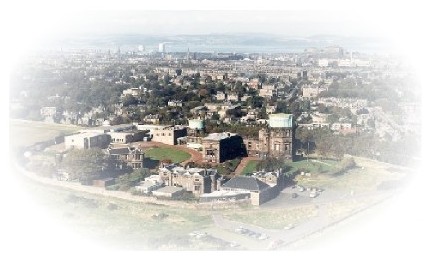
UK Astronomy Technology Centre, Edinburgh
The UK Astronomy Technology Centre (UK ATC) at the Royal Observatory
Edinburgh is an STFC facility,
responsible for designing and constructing
unique astronomical instrumentation. The mission of the UK ATC is
to keep the UK at the forefront of World astronomy by continuing to
produce the scientific hardware required to enable cutting edge
astronomy to be undertaken.
Some current / recent projects include:
- WFCAM - the largest infrared camera ever built, a cryogenic
instrument now undertaking unique surveys in the Northern Hemisphere
skies.
- SCUBA2 - the successor to SCUBA, one of the most successful
ground-based instruments ever built, utilising a new generation of
sub-millimetre CCD-like detectors.
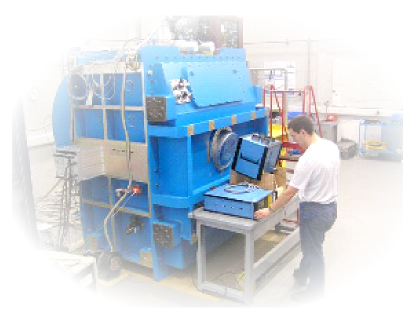
The SCUBA-2 instrument being tested at the ATC.
- MIRI - hosting the European PI and opto-mechanical design leads
for this key instrument on the James Webb Space Telescope, successor
to the Hubble Space Telescope.
- VISTA - an infrared survey telescope destined for the Southern hemisphere and a component of the UK's membership of ESO (the European Southern Observatory).

Structure of VISTA telescope in Dome on Cerro Paranal, Chile.
- KMOS - the K-band (2.2 μm wavelength) Multi-Object
Spectrometer - will be a second-generation instrument for one of the
ESO Very Large Telescopes. At this wavelength existing instruments can
study the spectra of only one object at a time; KMOS will enable
astronomers to look at up to 24 at once, making much more efficient
use of valuable telescope time. KMOS is being designed and built by a
consortium including the Max-Planck Institut für extraterrestrische
Physik, the Universitätssternwarte München, the UK ATC, the University
of Durham, the University of Oxford and the University of Bristol.
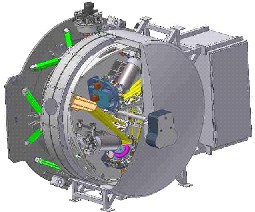
CAD image of KMOS
- European Extremely Large Telescope (E-ELT): The UK ATC is
leading the UK's work towards an optical and infrared telescope of up
to 42 m in diameter, approved into the design phase by ESO
Council. Colin Cunningham is UK PI, and chairs the ESO ELT
Instrumentation Working Group.
- CIRL - a programme to consolidate knowledge of properties of
useful materials at cryogenic temperatures, and to make measurements
on materials where properties are currently poorly or completely
unknown.
More information on the UK ATC can
be found here.
|
|
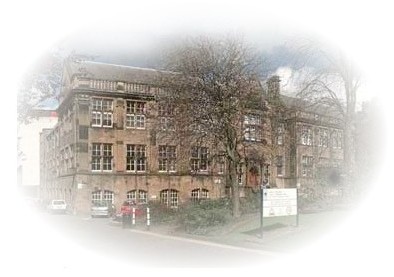
Institute for Gravitational Research, Glasgow
Scotland is unique in having in Glasgow the principal UK experimental
team at the forefront of research towards the detection of
gravitational radiation.
The Institute for Gravitational Research (IGR), under its Director
Professor J. Hough FRS, plays a leading part in the UK/German GEO 600
experiment, in the US LIGO project and in the ESA/NASA LISA Project.
Examples of current/recent projects include:
- Design, construction and demonstration of space-qualified precision aligned optical assemblies for LISA Pathfinder
- Development of novel interferometric techniques
- Development of systems of ultra-low mechanical loss for the suspension of mirror test masses
- Development of multiple pendulum systems using silica fibres to support the test masses
- New bonding technology (hydroxide-catalysis bonding), which exibits very low mechanical loss and is compatible with ultra-high vacuum
- Measuring the properties of optical coatings at cryogenic temperatures
in preparation for future interferometers operating in this temperature range
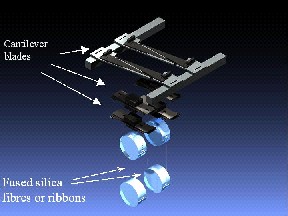
Suspension for Advanced LIGO
More information on the IGR can
be found here.
Experimental Particle Physics group, Glasgow
The University of Glasgow has a strong experimental particle physics
group (PPE), under the leadership of Prof. D. Saxon FRSE, renowned
worldwide not only for its fundamental research in experiments such as
Aleph and ATLAS at CERN but also for its applied research in the area
of innovative imaging particle and x-ray detectors.
The Detector Development group is involved in a wide range of projects
related to imaging, radiation detection and detector development,
within particle physics, medicine, biology and generic technology
development.
Examples of current/recent projects include:
- CERN ATLAS - Production and testing of modules for the LHC/ATLAS
- CERN LHCb - Design of LHCb/Velo upgrade detectors
- CERN Medipix - High sensitivity X-ray imaging for medical and synchrotron applications
- CERN RD50 - New technologies for super radiation hard detectors
- Retinal imaging - Measuring the electrical activity of retinal tissues
- Retinal implants - Pixel detectors as a cure for some forms of blindness
- 3D - Novel detector geometry for high speed radiation hard detectors
- Silicon carbide - Materials for high radiation environment
- Gallium nitride - Materials for protein studies
- Gallium arsenide - Materials for enhanced X-ray detection
- Detector simulation - Simulation using tools such as Medici, ISE, MCNP, Geant4 and SRIM coupled with the ScotGrid computing hardware
- Active pixel sensors - New pixel detector technologies
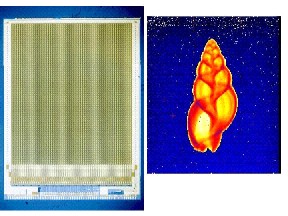
Medipix detector system and x-ray image of shell
(collaborative work with CERN Medipix )
More information on the group can
be found here.
|









